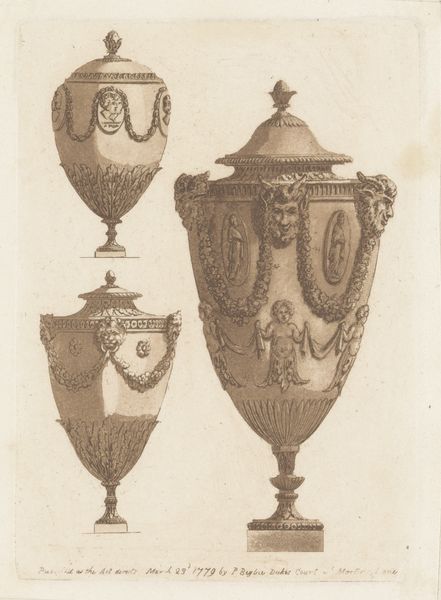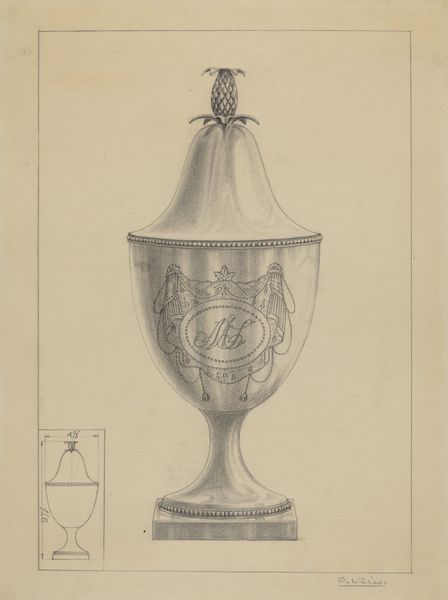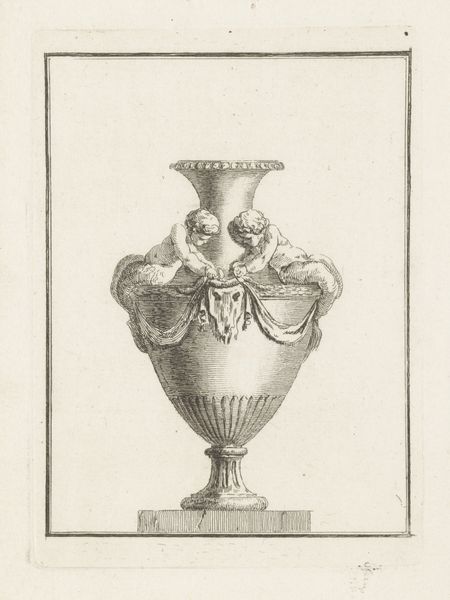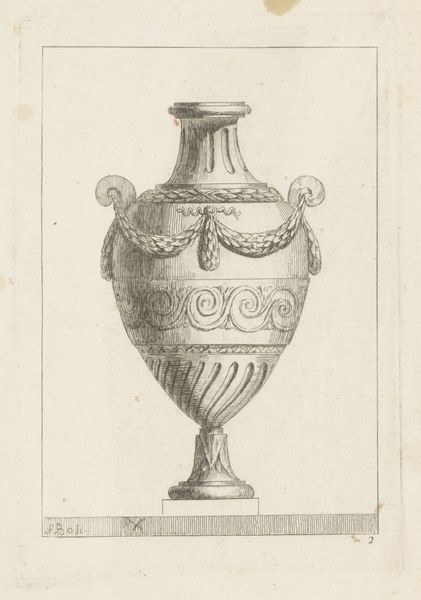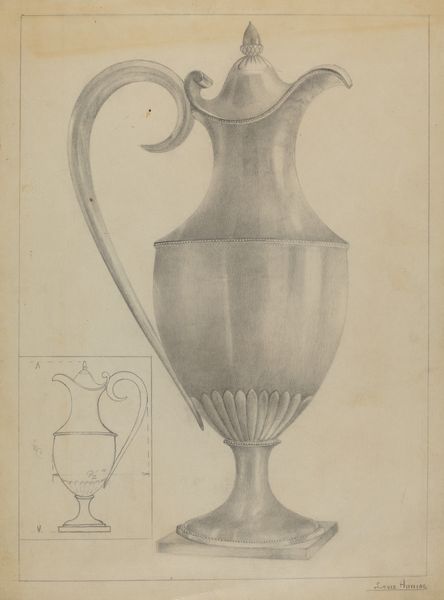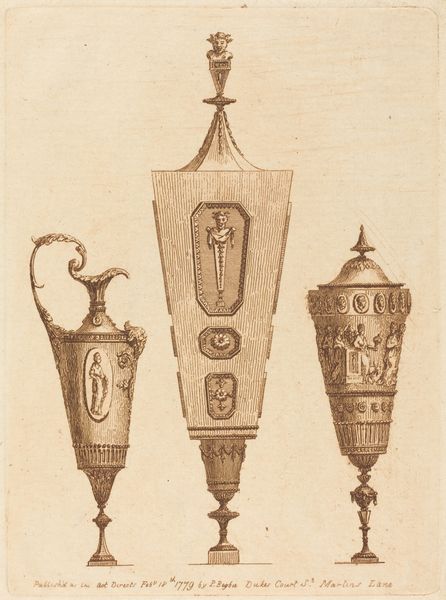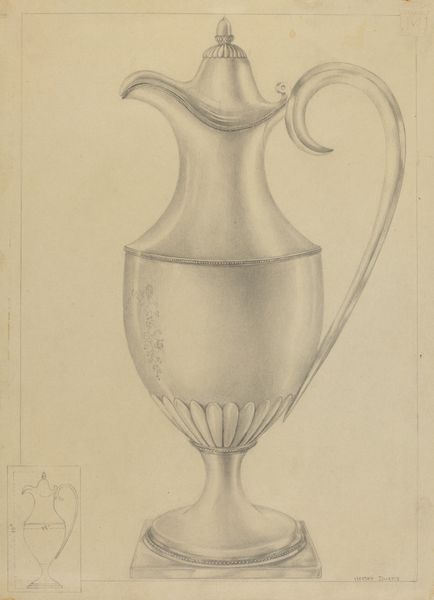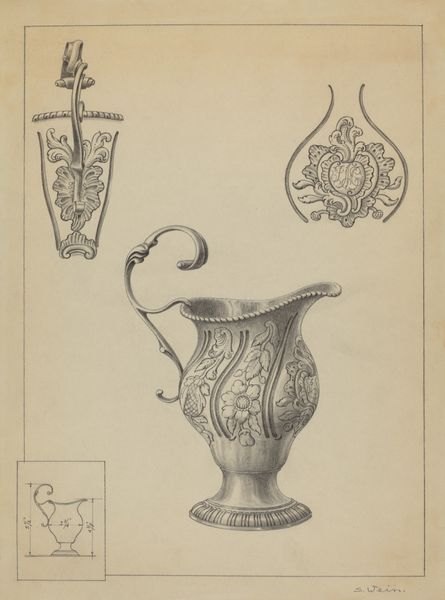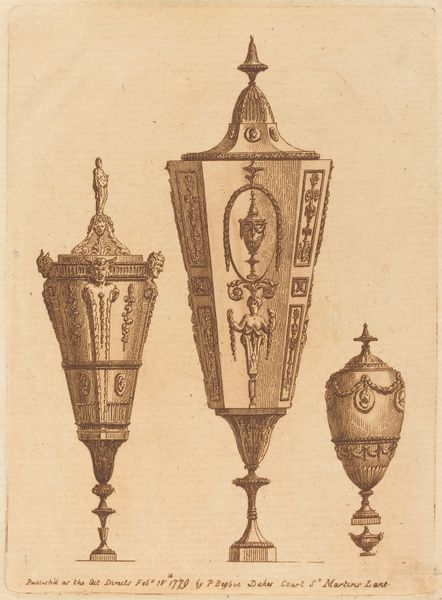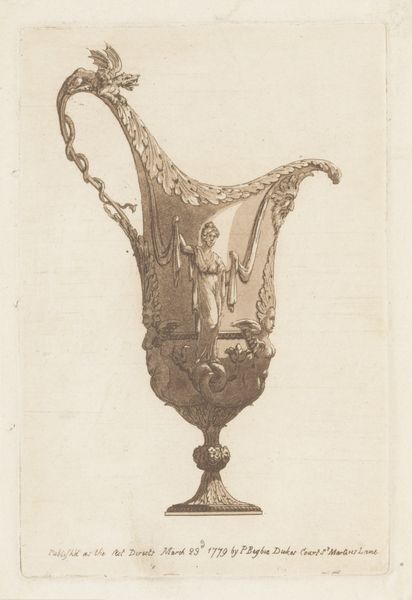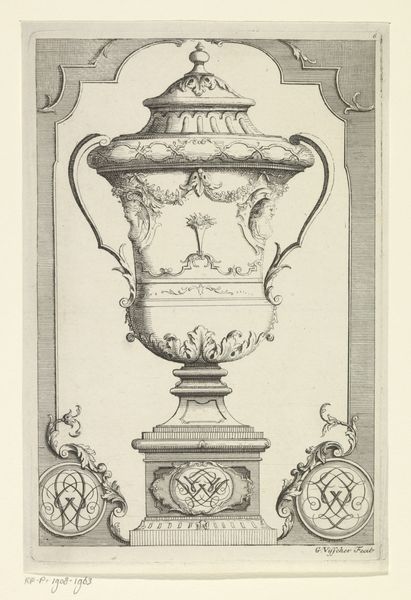
drawing, print, engraving
#
drawing
#
neoclacissism
# print
#
academic-art
#
decorative-art
#
engraving
Dimensions: plate: 15.5 x 10.9 cm (6 1/8 x 4 5/16 in.) sheet: 17.4 x 22.2 cm (6 7/8 x 8 3/4 in.)
Copyright: National Gallery of Art: CC0 1.0
Curator: Immediately striking! There's an almost austere formality about this grouping. Editor: Indeed. This is "Three Classical Vases, One with Flourishes," an engraving by Patrick Begbie, dating back to 1779. Its medium is print, specifically an engraving, and reflects the Neoclassical and Academic Art styles of the era. Curator: Given its creation through engraving, could we reflect on its relationship to reproduction and consumption of design during this period? The very act of printmaking speaks to broader systems. Editor: Absolutely. The context is crucial. These designs circulated during a time of immense social and political change. How did these idealized forms relate to realities of labor and power at the time? Were these aesthetics linked to class aspirations or colonial ambitions? Curator: Well, certainly Neoclassicism often draws upon the craftsmanship and materiality of past societies to evoke feelings, sometimes ones divorced from social realities. The print serves as a manual or prompt for makers to execute vases to enrich decorative schemas, pointing to a consumer culture of specialized labour in production. Editor: Agreed. By presenting them as models, this engraving promotes certain aesthetics. I wonder to what extent the adoption or rejection of classical aesthetics functioned as social and political signals, signifying alignment or dissent. What did embracing these forms truly mean in terms of access, exclusion, and even symbolic violence? Curator: It presents these idealised forms as objects, ready for use. Look at the paper and ink; consider their quality and the resources involved in producing this very object, including the skilled labour needed for its creation and distribution in this medium. Editor: Excellent point. It reminds us that the act of engraving and printing also involved a community of labor and materials, from the papermakers and printers to the distributors. Looking closer can expose hidden historical dynamics. Curator: Examining the technical processes shows that high art or seemingly 'neutral' decoration often conceal human labour and its related implications. The artwork's appeal hinges on creating forms easily and affordably re-producible. Editor: It invites a vital question. By what conditions, and whose expense were these 'classical' forms made accessible? It prompts an ongoing dialogue regarding artistic styles and society. Curator: Yes! It's easy to look past the surface aesthetics and fail to consider how such imagery permeated homes and minds throughout Europe. These pieces prompt vital investigation. Editor: Indeed. Each line tells a larger tale when contextualized through identity, power, and the silent laborers enabling the 'classical' ideals displayed here.
Comments
No comments
Be the first to comment and join the conversation on the ultimate creative platform.
